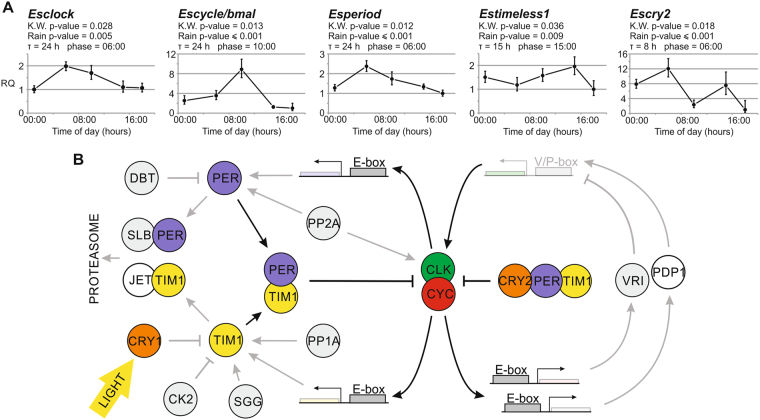Figure 6.
Putative functioning of the circadian clock machinery in E. superba. (A) Temporal patterns of expression of the five main circadian clock components (Esclock, Escycle/bmal, Esperiod, Estimeless1, and Escry2) in the eyestalks of krills sampled at 1:00, 6:00, 10:00, 15:00, and 18:00 during the Antarctic summer (almost 24 hours of light). Relative quantification (RQ) is represented as mean ± SD (n = 3 pools of 10 eyestalks each). Kruskal-Wallis p-value is reported, as well as adjusted p-value, period (τ) and phase of the oscillation estimated using RAIN algorithm. (B) A schematic model of the circadian clock in E. superba. The two main interlocked feedback loops are represented. The clock components identified in E. superba are colored; components sequenced but not functionally characterized are in grey (Supplementary Table 1); PDP1 and JET albeit only suggested by our data have been recently identified by Hunt et al.68.

